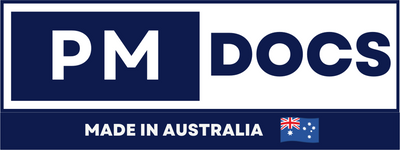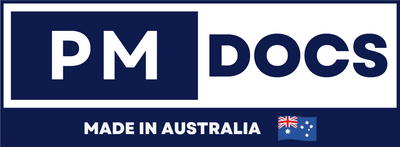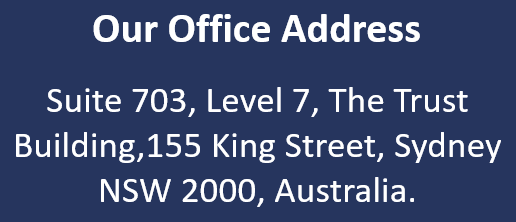Change Management Excel Template
Introduction
Change management is a vital process for organizations to navigate transition and growth successfully. It involves implementing strategies and techniques to effectively manage and support individuals, teams, and the organization through change. To streamline this process, many organizations use Change Management Excel Templates. These templates provide a structured framework to track and manage critical aspects of change, such as communication plans, stakeholder analysis, and risk assessments. This blog will explore the benefits of using a Change Management Excel Template and provide tips for effectively utilizing this tool in your change management efforts.

![]() The Importance of Effective Change Management
The Importance of Effective Change Management
- Clear Communication: Effective change management ensures that all stakeholders are informed about the change's reasons, benefits, and potential impacts. Clear communication helps to alleviate fears and resistance to change, ensuring that everyone understands the direction and goals of the change.
- Minimize Resistance: Change can often be met with resistance from individuals comfortable with current affairs. Effective change management strategies help to identify potential sources of resistance and develop strategies to address them. This can involve engaging employees in the change process, providing them with the necessary training and support, and addressing any concerns or apprehensions they may have.
- Smooth Transition: Change management ensures that transitioning from the old way of doing things to the new one is as smooth as possible. By identifying potential challenges and obstacles, a change management plan allows organizations to develop strategies to overcome them. This minimizes disruption to operations and helps to maintain productivity during the transition period.
- Increased Employee Engagement: Involving employees in the change process increases their sense of ownership and organizational involvement. This leads to increased employee engagement, motivation, and productivity. Effective change management strategies create opportunities for employee input, feedback, and involvement in decision-making, creating a positive work environment.
- Enhanced Organizational Resilience: Change is inevitable in today's fast-paced business environment. Effective change management builds organizational resilience by developing the capability to adapt and respond to changing circumstances. It establishes a continuous learning and improvement culture, enabling organizations to remain competitive and agile in a rapidly evolving marketplace.
- Alignment with Strategic Objectives: Change management ensures that the implemented changes are aligned with the organization's strategic objectives. It helps evaluate the change's impact on various aspects such as performance, customer satisfaction, and profitability. This alignment ensures that change initiatives are focused on achieving the desired outcomes and delivering value to the organization.
- Mitigate Risks: Change management allows organizations to identify and minimize potential risks associated with the change. Organizations can anticipate and address potential challenges by conducting a thorough risk assessment and developing mitigation strategies, reducing the likelihood of negative impacts. This helps to protect the organization's reputation, finances, and overall success.
Key features of the Change Management Excel Template
- User-Friendly Interface: The Excel template has a user-friendly interface, making it easy for users to navigate and use the various features.
- Change Request Tracking: The template allows users to track change requests by capturing essential details such as the change description, status, priority, and requester information.
- Change Impact Assessment: Users can assess the impact of each change by evaluating factors such as risk level, effort required, resources needed, and anticipated benefits.
- Change Implementation Planning: The template provides a structured approach to plan and schedule change implementation, including defining tasks, assigning responsibilities, setting start and end dates, and tracking progress.
- Change Communication Tracking: Users can track communication related to each change, including the stakeholders involved, the communication method, and the date of the communication.
- Change Approval Workflow: The template incorporates an approval workflow, allowing users to route change requests to specific individuals or teams for review and approval.
- Change Log: The template maintains a comprehensive change log that captures all the changes made, including the date, description, status, and individuals responsible for the change.
- Change Dashboard: The template includes a dashboard that visually represents vital change management metrics and KPIs, allowing users to assess the status and progress of change initiatives quickly.
- Reporting and Analysis: Users can generate various reports and analyze the change management process, helping them identify trends and areas for improvement and track performance against set goals.
- Customizable and Scalable: The Excel template is highly customizable, allowing users to tailor it to their specific change management processes and requirements. It is also scalable and suitable for managing small to large-scale change initiatives.

![]() Best Practices for Implementing Change Using the Template
Best Practices for Implementing Change Using the Template
- Analyze the Current Situation: Before employing the template, thoroughly analyze the existing processes, systems, and resources. Understand the gap between the current and desired future state to address the need for change effectively.
- Customize the Template: Tailor the template to suit your organization's or project's specific context. Modify the language, layout, and content to align with your goals, culture, and target audience.
- Communicate the Change: Craft a clear and concise message explaining the purpose and benefits of the change. Use plain language to ensure understanding across all levels of the organization. Communicate through various channels, such as emails, presentations, and newsletters, to reach a wider audience.
- Involve Key Stakeholders: Engage critical stakeholders directly or indirectly impacted by the change. Seek their input, address their concerns, and involve them in decision-making. This will help build buy-in and reduce resistance to the change.
- Establish a Change Management Team: Create a dedicated team responsible for overseeing the change process. Include individuals with diverse skills and expertise who can actively manage and monitor the implementation. Assign clear roles and responsibilities to each team member.
- Develop a Realistic Timeline: Create a comprehensive timeline that outlines the different stages of the change implementation. Take into account any dependencies, potential risks, and resources required. Ensure that the timeline is feasible and allows for adjustments if needed.
- Provide Training and Support: Offer training sessions to affected employees to ensure they understand the new processes, tools, or systems. Provide ongoing support throughout the transition period, including access to resources, FAQs, or help desks.
- Monitor Progress and Address Issues: Regularly monitor the progress of the change implementation. Identify any challenges or issues that arise and address them promptly. Have a feedback mechanism to gather input from employees and make necessary adjustments.
- Celebrate Milestones and Successes: Celebrate achievements and milestones to acknowledge the efforts of individuals and teams involved. Recognize and reward those who embrace and adapt to the change.
- Review and Evaluate: Once the change has been fully implemented, conduct a post-implementation review to assess the effectiveness of the template and the overall change process. Use the feedback to refine future change initiatives.










